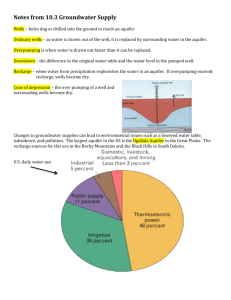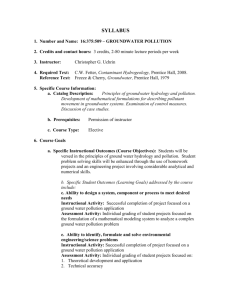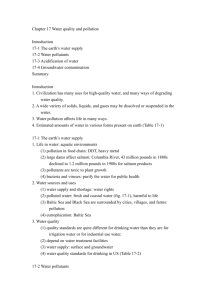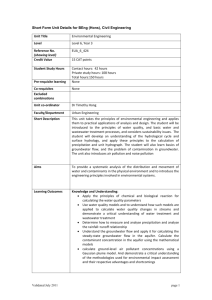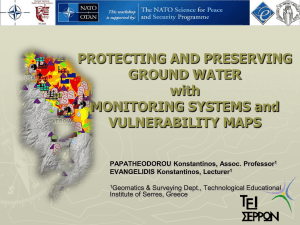WORD - virtualpharmtox.pharmacy.arizona.edu
advertisement
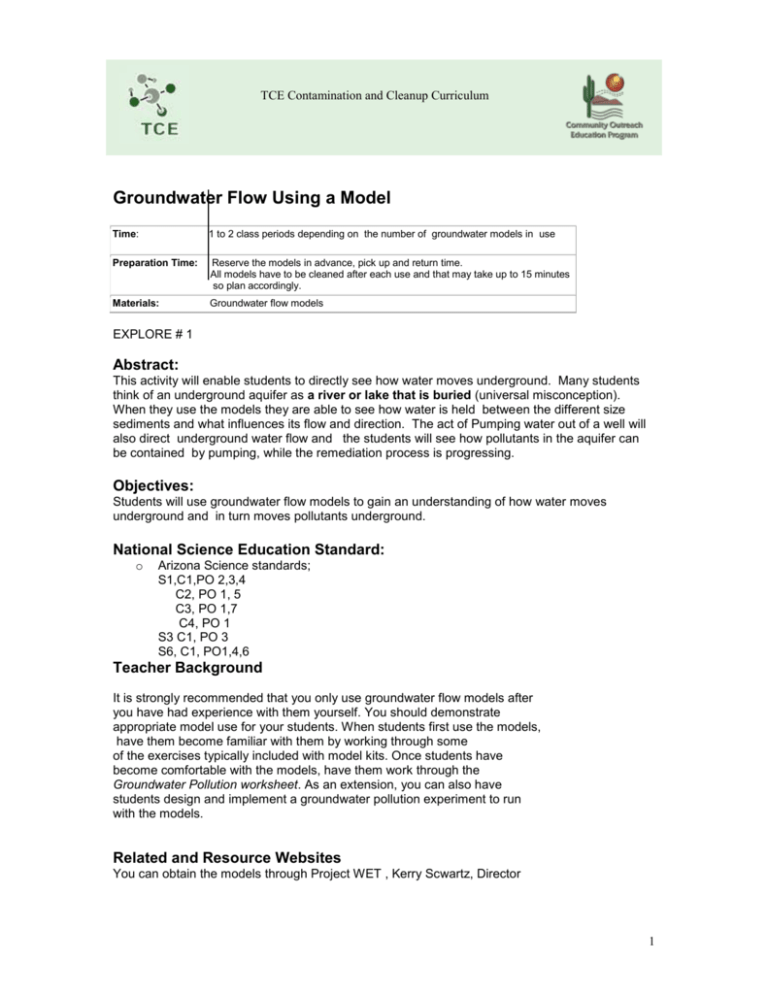
TCE Contamination and Cleanup Curriculum Groundwater Flow Using a Model Time: 1 to 2 class periods depending on the number of groundwater models in use Preparation Time: Reserve the models in advance, pick up and return time. All models have to be cleaned after each use and that may take up to 15 minutes so plan accordingly. Materials: Groundwater flow models EXPLORE # 1 Abstract: This activity will enable students to directly see how water moves underground. Many students think of an underground aquifer as a river or lake that is buried (universal misconception). When they use the models they are able to see how water is held between the different size sediments and what influences its flow and direction. The act of Pumping water out of a well will also direct underground water flow and the students will see how pollutants in the aquifer can be contained by pumping, while the remediation process is progressing. Objectives: Students will use groundwater flow models to gain an understanding of how water moves underground and in turn moves pollutants underground. National Science Education Standard: o Arizona Science standards; S1,C1,PO 2,3,4 C2, PO 1, 5 C3, PO 1,7 C4, PO 1 S3 C1, PO 3 S6, C1, PO1,4,6 Teacher Background It is strongly recommended that you only use groundwater flow models after you have had experience with them yourself. You should demonstrate appropriate model use for your students. When students first use the models, have them become familiar with them by working through some of the exercises typically included with model kits. Once students have become comfortable with the models, have them work through the Groundwater Pollution worksheet. As an extension, you can also have students design and implement a groundwater pollution experiment to run with the models. Related and Resource Websites You can obtain the models through Project WET , Kerry Scwartz, Director 1 TCE Contamination and Cleanup Curriculum Activity: Students will use groundwater flow models to understand the movement of water pollutants in the ground. Closure: Embedded Assessment: Groundwater Pollution Worksheet Names: 1. Name three sources of groundwater pollution. 2. What is the difference between point sources and non-point sources of water pollution? 3. Pour dye into the “point source.” The “point source” can represent various sources of groundwater contamination. Draw a diagram of the plume of pollution and its direction of travel from the point source to other location in the ground flow model. 4. In which direction did the pollutants travel faster? Why? 2 TCE Contamination and Cleanup Curriculum 5. What did you notice about the green dye? 6. In which layer did the pollutants travel faster? 3



